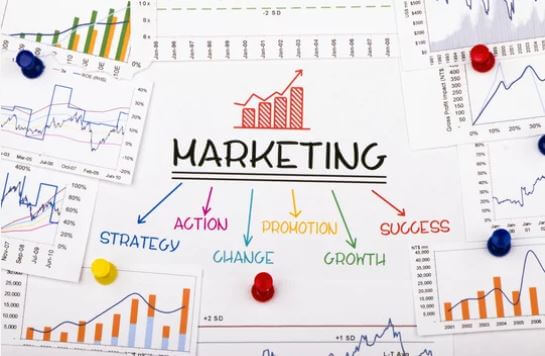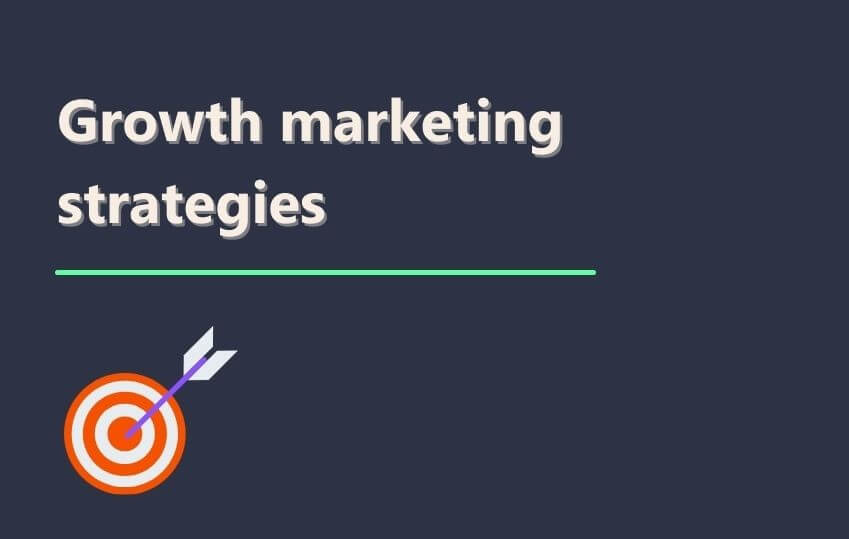Introduction of Growth Marketing
Growth marketing is a data-driven approach to acquiring, activating, and retaining customers. It is a process of identifying the most effective marketing strategies and tactics to drive sustainable growth for a business. Growth marketing is a holistic approach that spans the entire customer journey, from acquisition to retention. It is an iterative process involving continuous testing, optimization, and scaling successful strategies.
Definition of Growth Marketing
- Growth marketing is a data-driven approach to acquiring, activating, and retaining customers.
- It is a process of identifying the most effective marketing strategies and tactics to drive sustainable growth for a business.
- Growth marketing is a holistic approach that spans the entire customer journey.
- It is an iterative process involving continuous testing, optimization, and scaling successful strategies.
Importance of Growth Marketing
- It helps businesses acquire new customers and increase revenue
- Improves customer retention and reduces churn
- It helps businesses understand their customers better
- Enables enterprises to make data-driven decisions
- Helps businesses identify and scale successful marketing strategies
Growth marketing is a crucial aspect of any company that aims to acquire new customers, increase revenue, and improve customer retention. By understanding the customer journey and continuously testing and optimizing growth marketing strategies, businesses can make data-driven decisions that lead to sustainable growth.
Audience Segmentation
Audience segmentation identifies and groups customers based on common characteristics, such as demographics, behavior, and needs. It is a crucial step in growth marketing as it helps businesses understand their customers better and create tailored marketing campaigns that resonate with specific segments of their audience.
Identifying Target Audiences
- Understand the characteristics and needs of your ideal customer
- Identify customer segments with the highest potential for growth
- Use data and research to validate assumptions about your target audience
Creating Personas
- Develop detailed profiles of your target customer segments
- Define the characteristics, needs, pain points, and behavior of each persona
- Use personas to guide decision-making and create tailored marketing campaigns
Understanding Customer Needs and Pain Points
- Conduct customer research to identify and understand customer needs and pain points.
- Use this information to create solutions and messaging that address these needs.
- Continuously monitor and update customer needs and pain points
Businesses can create tailored marketing campaigns that resonate with specific audience segments by identifying target audiences, creating personas, and understanding customer needs and pain points. This helps to increase the effectiveness of marketing campaigns and ultimately drives growth.
It is important to note that audience segmentation is an ongoing process that should be reviewed and updated regularly to reflect market or business changes. By continuously monitoring and updating customer needs and pain points, businesses can ensure that their marketing campaigns are always relevant and practical.
Acquisition Strategies
Acquisition strategies are methods of attracting new customers to a business. In growth marketing, acquisition strategies are tested, optimized, and scaled to find the most effective ways to acquire new customers.
Paid Advertising
- Paying to promote your business on various platforms to reach a wider audience.
Google Ads
- Advertising on Google’s search engine results in pages, display networks, and YouTube.
- Targeting users based on keywords, demographics, interests, and behaviors.
Facebook Ads
- Advertising on Facebook and Instagram to reach users based on demographics, interests, and behaviors.
Instagram Ads
- Advertising on Instagram to reach users based on demographics, interests, and behaviors.
Content Marketing
- Creating and distributing valuable content to attract and engage customers.
Blogging
- Creating and publishing informative and educational articles on a business’s website.
Influencer Marketing
- Partnering with social media influencers to promote a business’s products or services.
Video Marketing
- Creating and publishing engaging video content on various platforms to promote a business.
Search Engine Optimization
- Optimizing a business’s website and content to improve its search engine rankings and visibility.
Referral Marketing
- Encouraging existing customers to refer new customers to a business.
Email Marketing
- Sending promotional and educational emails to a business’s email list to attract and engage customers.
Acquisition strategies are essential to growth marketing, as they help businesses acquire new customers and increase revenue. Companies can identify the most effective ways to reach new customers and achieve sustainable growth by testing, optimizing, and scaling various acquisition methods.
Activation and Retention
Activation and retention strategies are focused on converting new customers into engaged and loyal customers. In growth marketing, these strategies are tested, optimized, and scaled to find the most effective ways to activate and retain customers.
Onboarding
- Introducing new customers to a business’s products or services and helping them become successful users.
Engagement
- Encouraging customers to interact with a business and its products or services.
Retention
- Keeping customers engaged and interested in a business over time.
Reactivation
- Re-engaging inactive customers and encouraging them to continue using a business’s products or services.
Activation and retention strategies are critical to growth marketing, as they help businesses convert new customers into loyal and engaged customers. Companies can identify the most effective ways to activate and retain customers and achieve sustainable growth by testing, optimizing, and scaling various activation and retention methods.
Activation and retention strategies also help reduce customer churn, which can significantly impact a business’s revenue. By keeping customers engaged and interested in a company over time, businesses can ensure that they continue to generate revenue from existing customers. Additionally, reactivating inactive customers can also provide an additional source of income.
It is important to note that activation and retention strategies are ongoing, and it is essential to continuously monitor and update these strategies to ensure they remain relevant and practical.
Conclusion
Growth marketing is a data-driven approach to acquiring, activating, and retaining customers. It is a process of identifying the most effective marketing strategies and tactics to drive sustainable growth for a business. This article covered the different aspects of growth marketing, including audience segmentation, acquisition strategies, activation and retention, and analytics and optimization.
Summary
- Growth marketing is a data-driven approach to acquiring, activating, and retaining customers.
- It involves identifying target audiences, creating personas, understanding customer needs and pain points, and testing, optimizing, and scaling various marketing strategies.
- It is an ongoing process that requires continuous testing, optimization, and scaling of successful strategies.
Best Practices
- Use data and research to validate assumptions about target audiences.
- Continuously monitor and update customer needs and pain points.
- Test, optimize, and scale various marketing strategies to find the most effective ways to acquire, activate, and retain customers.
Recommended Resources
- “Growth Hacker Marketing” by Ryan Holiday
- “Traction: How Any Startup Can Achieve Explosive Customer Growth” by Gabriel Weinberg and Justin Mares
- “The Lean Startup: How Today’s Entrepreneurs Use Continuous Innovation to Create Radically Successful Businesses” by Eric Ries
In conclusion, growth marketing is an essential aspect of any business that aims to acquire new customers, increase revenue, and improve customer retention. By understanding the customer journey and continuously testing
F.A.Q.
What is the goal of growth marketing?
Growth marketing aims to acquire new customers, increase revenue, and improve customer retention through data-driven, test-and-learn strategies and tactics. It is a holistic approach that involves identifying target audiences, creating personas, understanding customer needs, and pain points, testing, optimizing, and scaling various marketing strategies to find the most effective ways to acquire, activate, and retain customers. The ultimate goal of growth marketing is to achieve sustainable business growth through customer acquisition, activation, and retention.
What is growth marketing vs. marketing?
Growth marketing is a specific approach to marketing that focuses on acquiring new customers, increasing revenue, and improving customer retention through data-driven, test-and-learn strategies. It is a holistic approach that involves identifying target audiences, creating personas, understanding customer needs and pain points, testing, optimizing, and scaling various marketing strategies to find the most effective ways to acquire, activate, and retain customers.
On the other hand, traditional marketing is a broader term that encompasses various marketing activities and strategies. It often focuses on building brand awareness, promoting products or services, and increasing sales. Traditional marketing can include advertising, public relations, events, and promotions.
While traditional marketing aims to reach a broad audience, growth marketing is more targeted and focuses on acquiring and retaining new customers. Growth marketing is more data-driven, emphasizing testing, optimization, and scaling successful strategies. While traditional marketing can be seen as a one-way street, growth marketing is more of a loop, continuously testing, optimizing, and climbing.
What is the difference between growth marketing and product marketing?
Growth marketing and product marketing are related but distinct fields that focus on different aspects of a business.
Product marketing is promoting and positioning a product or service to a specific target market. It involves researching and understanding customer needs and pain points, creating messaging and positioning, and developing go-to-market strategies. Product marketers work closely with product development teams to ensure that the product meets the target market’s needs and is positioned in the best way possible.
On the other hand, growth marketing is a broader approach that focuses on acquiring new customers, increasing revenue, and improving customer retention through data-driven, test-and-learn strategies. Growth marketing involves identifying target audiences, creating personas, understanding customer needs and pain points, and testing, optimizing, and scaling various marketing strategies to find the most effective ways to acquire, activate, and retain customers.
Product marketing and growth marketing share some similarities, both fields focus on understanding the customer, but growth marketing is more focused on acquiring new customers and retaining existing ones. Growth marketers work with various teams, such as sales, engineering, and product development, to understand customer needs and map the customer journey to optimize acquisition, activation, and retention. In summary, Product marketing is focused on positioning and promoting a product, while growth marketing is focused on acquiring new customers and growing revenue.
What is the difference between growth marketing and performance marketing?
Growth marketing and performance marketing are related but distinct fields that focus on different aspects of a business.
Performance marketing is a type of digital marketing that focuses on driving measurable results, typically through paid advertising such as pay-per-click (P.P.C.) and affiliate marketing. It is a results-driven approach that focuses on generating a return on investment (R.O.I.) from marketing efforts. Performance marketers use data and analytics to track and measure the performance of campaigns and optimize them for better results.
On the other hand, growth marketing is a broader approach that focuses on acquiring new customers, increasing revenue, and improving customer retention through data-driven, test-and-learn strategies. Growth marketing involves identifying target audiences, creating personas, understanding customer needs and pain points, and testing, optimizing, and scaling various marketing strategies to find the most effective ways to acquire, activate, and retain customers.
While performance marketing is a specific tactic focusing on driving measurable results, growth marketing is a holistic approach that encompasses various marketing strategies and tactics. Both fields share data and analytics to track and measure results, but growth marketing focuses on acquiring new customers, increasing revenue, and improving customer retention. Growth marketers usually use performance marketing to optimize the customer acquisition, activation, and retention process.







